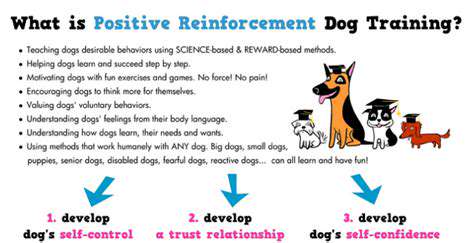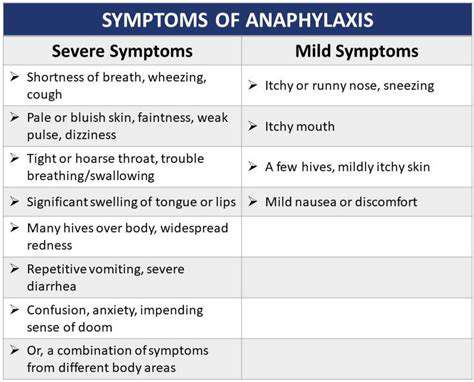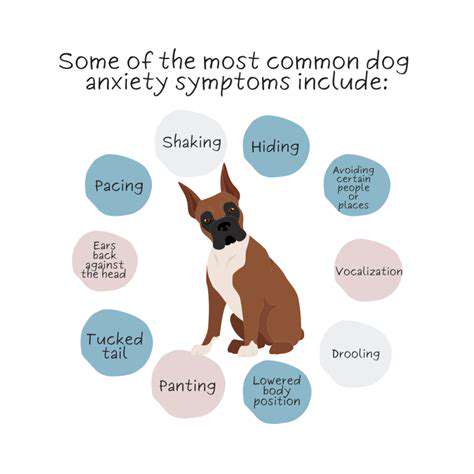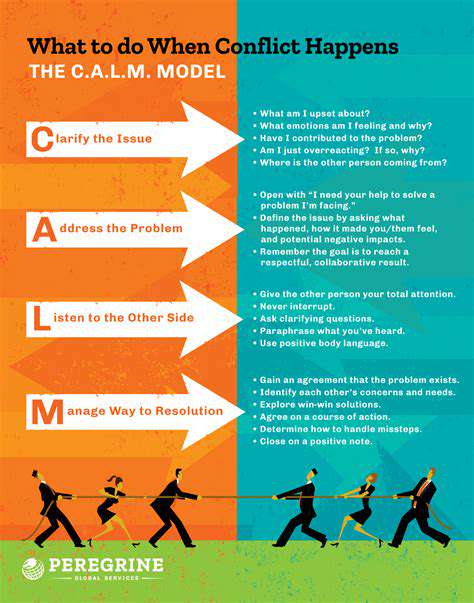Leash Reactivity: Training Solutions for Reactive Dogs
Identifying the Root Cause of Reactivity
Understanding the Underlying Triggers
Reactivity in dogs, often seen as leash pulling or lunging, arises from multiple interconnected factors. These behaviors may stem from past experiences or inherent sensitivities. Pinpointing the exact stimuli that provoke reactions is essential for creating meaningful training strategies. Careful observation of when and where reactivity occurs helps tailor solutions that address core issues rather than just symptoms.
Sometimes a single trigger like a specific noise can spark reactivity, while other times it's complex combinations - other dogs' presence, human body language, or particular locations. Accurate trigger identification enables effective desensitization and counter-conditioning techniques.
The Role of Fear and Anxiety
Leash reactivity often originates from fear-based responses. When dogs feel threatened, instinctive defensive behaviors like barking or lunging emerge. These aren't aggressive acts but self-protective mechanisms that require empathetic understanding.
Effective intervention means creating secure environments where dogs can gradually build confidence around triggers. Controlled exposure combined with positive reinforcement helps reshape their emotional responses.
Identifying Learned Behaviors
Some reactivity develops through conditioning - dogs associate certain stimuli with past outcomes, whether negative (startling experiences) or positive (unintentional reinforcement). These learned patterns become automatic responses that require systematic retraining.
Investigating behavioral history reveals crucial insights. Was there a traumatic encounter? A lack of environmental control? Understanding these contexts informs more effective rehabilitation plans.
The Importance of Proper Socialization
Early life experiences profoundly influence canine behavior. Puppies lacking diverse, positive exposures often develop reactive tendencies. Thoughtful socialization - gradual, controlled introductions to various stimuli - establishes lifelong confidence.
Quality matters more than quantity in socialization. Every interaction should build positive associations, avoiding overwhelming situations that might reinforce fears.
Evaluating the Training Method
Training approach significantly impacts outcomes. Punitive methods typically exacerbate reactivity by increasing stress, while reward-based techniques foster trust and willing cooperation. The right professional can customize strategies to each dog's unique temperament and triggers.
Certified behavior specialists offer structured plans that address both canine needs and owner capabilities, creating sustainable solutions.
The Owner's Role in Management
Consistency from owners is paramount. Recognizing subtle body language cues and maintaining proper leash control prevents escalation. Proactive management combined with ongoing training establishes stable routines that reduce reactive episodes.
Successful rehabilitation requires patience and commitment. Regular practice of techniques in various environments solidifies new behavioral patterns.
Effective Leash Handling Techniques

Fundamental Principles of Leash Handling
Quality leash work creates safe, enjoyable walks for both dog and handler. The leash should function as a communication tool, not a restraint device. Observing canine body language allows timely adjustments to maintain calm interactions.
A slack leash indicates proper technique - enough length for comfortable movement without tension that might trigger stress responses.
Maintaining a Loose Leash
The golden rule of leash work is keeping consistent slack. Sudden tension often initiates pulling cycles, while steady looseness promotes relaxation. Reward-based training reinforces this ideal state, using treats or praise when dogs maintain proper positioning.
Understanding Your Dog's Body Language
Astute handlers recognize subtle stress signals - averted gaze, stiff posture, or excessive panting. Early intervention based on these cues prevents behavioral escalation. Each dog has unique tells that experienced owners learn to interpret.
Avoiding Common Mistakes
Jerky leash corrections often backfire, creating confusion or defensive reactions. Sudden pulls transform the leash into a stress trigger rather than a guidance tool. Similarly, inconsistent reinforcement misses opportunities to shape desirable behaviors.
Using Positive Reinforcement Techniques
Reward-based systems build strong human-canine bonds. Celebrating desired behaviors makes dogs eager participants in training. This approach creates positive associations with leash walking through predictable, pleasant outcomes.
Addressing Leash Pulling
Persistent pulling requires systematic response patterns. The stop-and-redirect method teaches dogs that forward movement only resumes with loose-leash compliance. Identifying underlying motivations (excitement, fear, curiosity) allows targeted solutions.
Troubleshooting and Adjusting Your Approach
When challenges persist, professional guidance proves invaluable. Certified trainers offer fresh perspectives and customized strategies for difficult cases. Regular technique evaluation ensures methods remain effective as dogs progress.

Read more about Leash Reactivity: Training Solutions for Reactive Dogs
Hot Recommendations
- Best Pet Bowls: Stainless Steel and Ceramic
- Pet Hydration: Why It's Crucial
- Stop Counter Surfing: Training Your Dog to Stay Off
- Pet Hypothyroidism: Symptoms and Management
- Signs of Pet Liver Disease: What to Watch For
- Pet Emergency Kits: What to Pack
- Dangers of Xylitol: Toxic to Dogs
- Dealing with Pet Diarrhea: When to See a Vet
- Preparing Pets for Travel: Tips for a Smooth Trip
- Pet Depression: Recognizing the Signs











